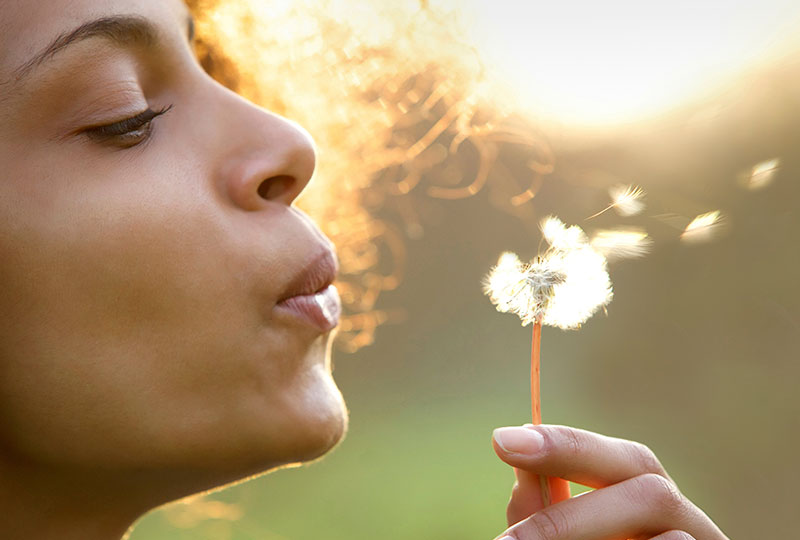Learn how this daily habit can help the whole family relax.
Summer as a child used to mean carefree fun and days of relaxing. For many of us, those days are few and far between.
This summer, consider teaching your family some meditation techniques. According to the National Center for Complementary and Integrative Health, meditation can help a number of conditions including:
- High blood pressure
- Irritable bowel syndrome
- Anxiety
- Depression
- Insomnia
- Acute respiratory illnesses
The great thing about meditation is that it doesn’t require any tools and can be done anywhere, for any amount of time. We talked to Michelle Foote-Pearce, director of mindfulness programs and psychotherapist at Vanderbilt’s Osher Center for Integrative Health, about the practice and how your family can incorporate it.
“By spending some time each day — anywhere from a few minutes to 30 minutes — quietly sitting and paying attention to the sensations of breathing, or contemplating some phrase or quality, the meditator experiences a more relaxed body and, with the right intention, an open, accepting heart and mind,” Pearce said. “In contrast, the typical state for the average busy person is to have a tense body and a wandering mind; both cause stress and lead to various symptoms and illnesses.”
What does meditation look like?
Meditation can come in two forms: active and sitting.
Pearce said an active form of mindfulness meditation is being intentionally present and aware during activities to all that is arising in the moment: body sensations, sensory experience and thoughts. By putting aside other thoughts and worries, being present allows a person to see more, smell more, taste more and ultimately experience more.
Pearce said sitting meditation on the breath is usually the first practice recommended for adults: “It is the simplest way to experience how the mind typically wanders, to practice coming back to the present and to learn the healing power of nurturing a relaxed body and a calm, peaceful, but alert mind and open heart.”
From the outside, sitting meditation doesn’t look like much.
- Sit still in a comfortable, relaxed position with the back strong and lifted. (This encourages being alert and awake.)
- Close your eyes, or simply lower them, unfocused.
- Choose if you want to be focused on something (like a quote or your breath), or if you want to simply sit and pay attention to whatever comes to mind or is experienced.
“The most common and one of the easiest places to focus for the beginner is on the experience of breathing — what the body feels like as breathing happens, no effort needed, from the cool sensation around the nostrils on the in breath, to the subtle feeling of swirling air at the back of the throat, or the expansion and contraction of the chest cavity from the inside and the gentle rise and fall of the abdomen,” Pearce said.
Will I benefit from meditation?
“After the first time meditating, people often report feeling more relaxed and focused, though this doesn’t happen for everyone, and it doesn’t mean that meditation is not having a health benefit if it doesn’t. There is so much research showing the health benefits of meditation that the major research funders are no longer studying the benefits; we know it’s beneficial, but are now looking at what types and ‘dose’ (frequency and length) of meditation work best,” Pearce said.
How can I make meditation a habit?
“At first meditation will need to be scheduled into your day. Over time, most people find that they feel so much better on the days they meditate that they don’t want to miss their meditation time. Having a regular place to meditate builds up a habit, and over time the body and mind will settle into meditation quickly when you sit in ‘your meditation place,’ much like being in your own bed invites sleep for most people,” Pearce said.
She suggests starting small, just a few minutes at first, because consistency, not length of time, is most important for making meditation a habit.
How can children participate in meditation?
The key things to teaching mindfulness meditation to kids is to remember it should be fun, simple and brief, Pearce said.
Mindfulness meditation can help children be more aware of what they are experiencing and can create the early habit of taking a pause to breathe and feel when things seem out of control, she said.
Some activity ideas:
- Blowing on a pinwheel or a dandelion can become a time to pay attention to what it feels like on the inside to breathe: “What do I feel inside? I feel my chest getting bigger and my abdomen going up and down.”
- “Breathing buddies” can help when practicing breathing meditation. Have the child choose a stuffed animal as a breathing buddy. Everyone then lies down and places a breathing buddy on each belly. The child is then invited to watch as the breathing buddy goes up and down. Once the child is experiencing breathing more mindfully, you can help direct him to pay attention to what it feels like on the inside, as he breathes his buddy up and down.
- Sit still with a snow globe. Watch a shaken snow globe as it settles and explore the child’s own experiences — does she feel like the snow globe on the inside as she sits more still, breathes and pays attention?
- Go for a walk and spend a few minutes being very quiet and listening for sounds; listening to a bell all the way until you can’t hear it anymore.
- Developing their “Spidey sense” by paying attention to what you can see, hear, taste and feel.
“All parents are keenly aware that when they feel rushed and stressed they are less patient, more intolerant and less kind to their children. It’s at just those times that the children somehow become the hardest to deal with,” Pearce said.
“Rather than feel guilty about our sometimes-stressed parenting style, it is more helpful to become intentional about ways to reduce the stress of the whole family by carving out specific times to be still or to enjoy nature and the world. A stressed situation can be instantly transformed by taking just a few minutes to stop, breathe and talk about what is happening on the inside.”
No right way to relax
No matter the form or the length of time you choose to meditate, Pearce reminds us that there is no right or wrong meditation technique.
“The objective is to take a pause in life, to simply sit, breathe and invite the body to relax and the mind to be present and aware with acceptance and kindness,” she said.

The Osher Center for Integrative Health provides health care designed around your whole health: mind, body and spirit. Call 615-343-1554 for an appointment.

